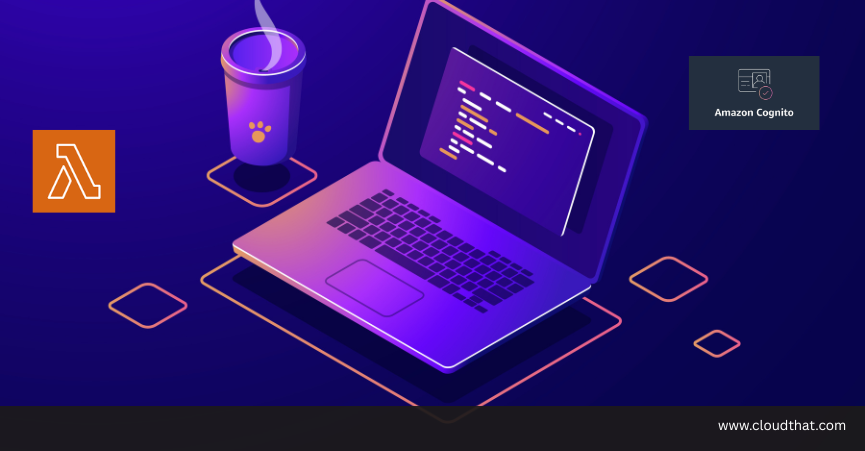|
Voiced by Amazon Polly |
Overview
Businesses grow in today’s data-driven environment when they can make well-informed decisions supported by real-time analytics. Amazon QuickSight is a scalable and effective solution for building informative dashboards for data visualization, analysis, and sharing. This article will show you how to use Amazon QuickSight’s features to properly explain your data and build an attractive dashboard.
Pioneers in Cloud Consulting & Migration Services
- Reduced infrastructural costs
- Accelerated application deployment
Amazon QuickSight
Amazon QuickSight is a business intelligence and visualization application based on Amazon. It is used to build stories and visualize data to provide graphical details. You can create documents by applying filters, hierarchies, and columns to data entered as a dataset. For efficient data visualization, you can select from various charts, including pie charts and bar charts.
- With Amazon QuickSight, creating and publishing interactive dashboards with machine learning (ML) insights is simple.
- You can create documents by applying filters, hierarchies, and columns to the dataset that has been entered.
Dashboard
A dashboard lets you see different kinds of visual data in a single place. Dashboard visuals, such as tables, graphs, and charts, make it easy for others who aren’t as familiar with the data to comprehend the insights or story it conveys quickly.
- Displaying a thorough summary of data from several sources is the primary function of a dashboard.
- Dashboards are important because they allow users to make higher-quality, data-driven decisions.
How to visualize data with Amazon QuickSight
The steps below are how Amazon QuickSight provides interactive dashboards and insights:
- Gather and import data
Amazon QuickSight collects and views information from various Amazon tools, such as Amazon Athena, Amazon Aurora, Amazon RDS, PostgreSQL, Amazon S3, Amazon Redshift, SQL Server, etc. Additionally, it connects with file uploads, on-premises databases, and API-based data sources such as Salesforce.
- Connect to data
No matter where the data is located, Amazon QuickSight can connect to it, including CSV/XLSX/JSON files, corporate data centers, SaaS, third-party apps, and the AWS cloud. Amazon prepares data for analysis by filtering it, renaming fields to make them simpler to read, adding calculated fields, altering data types, and writing SQL queries.
- Examine the data
The BI platform analyses the data and instantly generates graphs and calculations using its Super-fast, Parallel, In-memory Calculation Engine (SPICE). Every time an analysis is modified or visually updated, there is no need to retrieve data due to the engine’s processing and storage capability.
- Build visualizations
Amazon QuickSight produces graphics that users may personalize and arrange. It also removes the necessity for users to manually extract, manipulate, and import data. With this solution, business users may access interactive dashboards, email reports, and embedded analytics, which helps them get insights and take appropriate action. Interactive graphs, charts, tables, tales, sheets, and other visualizations are available in the Amazon QuickSight workspace. Users can view and create dashboards in their enterprise apps with embedded analytics.

How to Create a Dashboard
Create a New Analysis: Click New Analysis once your dataset is ready. You can begin visualizing your data at this point.
Select Visuals: Amazon QuickSight offers several visualization options, including pie charts, bar charts, line graphs, heat maps, and KPIs. Each type of chart serves different data narratives. For instance, a line chart may monitor performance patterns over time, while a bar chart could provide the frequency of “Yes” answers to questions from various trainers.
Add Controls and Filters: Users can dynamically slice and dice the data by adding filters. For example, you can filter by trainer, date, or training batch when creating a training dashboard.
Utilize Calculations: Amazon QuickSight lets you make calculated fields for metrics such as percentages, totals, and monthly comparisons. This might make it easier to see how the “Yes” and “No” answers differed from the prior months.
Add Insights: You can use ML-powered insights like forecasting, anomaly detection, and what-if analysis with Amazon QuickSight. Without human assistance, this function may automatically identify patterns or irregularities in your training performance data.
Publishing the Dashboard in Amazon QuickSight: After building your visualizations in Analysis, the final step in Amazon QuickSight is to publish your dashboard so it can be shared with others in your organization. Publishing makes the dashboard accessible to your target audience, allowing them to interact with the data and derive insights.
Conclusion
Amazon QuickSight makes it easier for teams to derive insightful information from data by streamlining the process of creating dynamic and aesthetically pleasing dashboards.
Drop a query if you have any questions regarding Amazon QuickSight and we will get back to you quickly.
Empowering organizations to become ‘data driven’ enterprises with our Cloud experts.
- Reduced infrastructure costs
- Timely data-driven decisions
About CloudThat
CloudThat is an award-winning company and the first in India to offer cloud training and consulting services worldwide. As a Microsoft Solutions Partner, AWS Advanced Tier Training Partner, and Google Cloud Platform Partner, CloudThat has empowered over 850,000 professionals through 600+ cloud certifications winning global recognition for its training excellence including 20 MCT Trainers in Microsoft’s Global Top 100 and an impressive 12 awards in the last 8 years. CloudThat specializes in Cloud Migration, Data Platforms, DevOps, IoT, and cutting-edge technologies like Gen AI & AI/ML. It has delivered over 500 consulting projects for 250+ organizations in 30+ countries as it continues to empower professionals and enterprises to thrive in the digital-first world.
FAQs
1. What are the benefits of Amazon QuickSight?
ANS: – With its serverless, scalable business intelligence, Amazon QuickSight can handle thousands of users without requiring infrastructure management. It provides quick, dynamic visualizations that can be viewed on any device and makes building analytics into websites or apps simple. It offers insights like anomaly identification and forecasting thanks to integrated machine learning. In addition to utilizing Amazon’s strong security and compliance capabilities for data protection, the pay-per-session price guarantees cost-effectiveness.
2. What are Amazon QuickSight's price alternatives?
ANS: – With its special pay-per-session pricing structure, Amazon QuickSight only charges you when customers actively use the dashboard. It is affordable for large-scale deployments due to this model. There is also a basic pricing tier for those who use it more frequently.
3. Does Amazon QuickSight support real-time data analysis?
ANS: – By connecting to real-time data sources or streams, Amazon QuickSight allows real-time data analysis, providing decision-makers with the most recent information and visuals.
WRITTEN BY Sweata Kumari Rauniyar
Sweata Kumari Rauniyar works as a Research Intern at CloudThat. She has knowledge of Cloud services and is passionate about learning new technologies.


 Login
Login


 October 30, 2024
October 30, 2024 PREV
PREV









Comments